Horses and Changing Seasons
By: Maribel Estefanell Posted: 19/05/2023
We are facing the fact that winters are getting colder and summers are hotter. We could say that spring and autumn are slowly vanishing.
When summer or winter arrives, we need to adapt to cope with extreme temperatures as well as possible.
In the case of horses, despite being warm-blooded animals that can adapt to these changes, we should take all reasonable steps to ensure their welfare.
In this article, we will discuss how both heat and cold can affect your horse, and how we can help him.
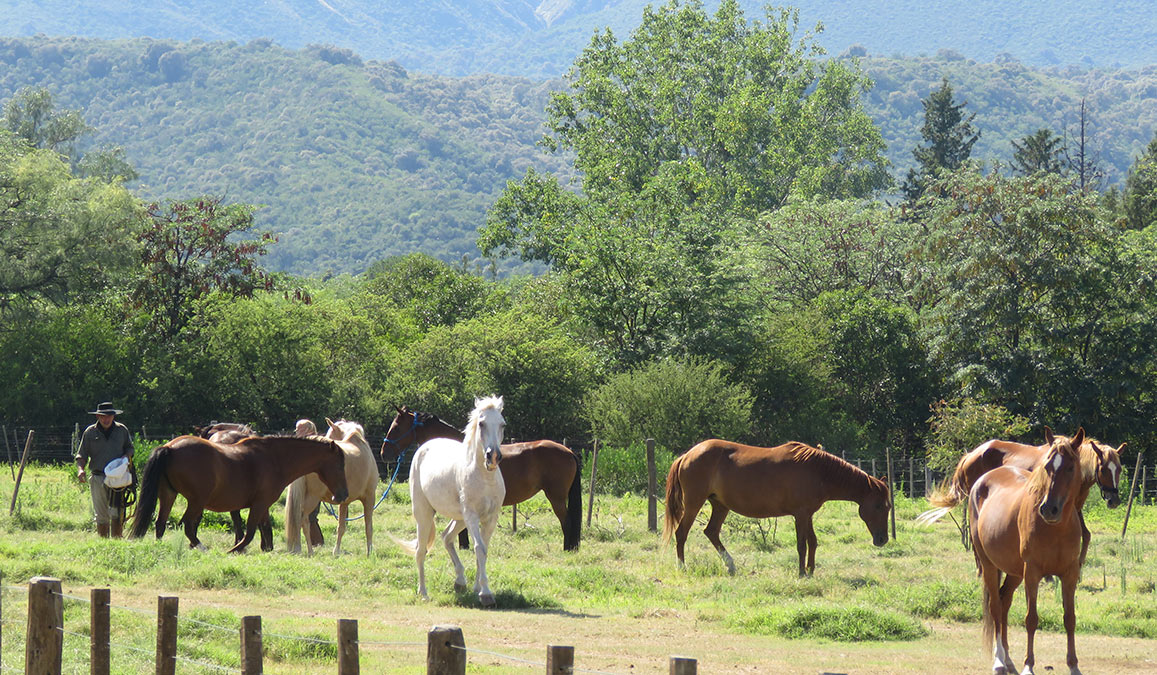
Thermoregulation in Horses
Horses adapt easily to cold and heat, as long as temperatures are not below 0 or above 25 degrees Celsius.
In order for a mammal to survive, internal body temperature is kept within a very narrow range. For horses, the average body temperature is 38°C. If the temperature exceeds these limits either above or below, horses have a natural mechanism to regulate it.
This is what we call thermoregulation.
But how does thermoregulation work?
If ambient temperature is within this range, horses can control their body temperature by simply opening and closing blood vessels in the skin to lose or retain heat.
Taking a deeper look into this process, we can see that the skins’ thermoregulatory mechanisms consist of four major factors: skin, coat, arteries and sweat glands.
Due to some thermoregulatory factors such as the skin and coat being very good insulators, which prevent heat loss, and the muscles producing heat through their movements, it is far easier for horses to warm up in cold weather than to cool down in hot weather, or to cool down after intensive exercising.
Thanks to this process, horses can be active all year round.
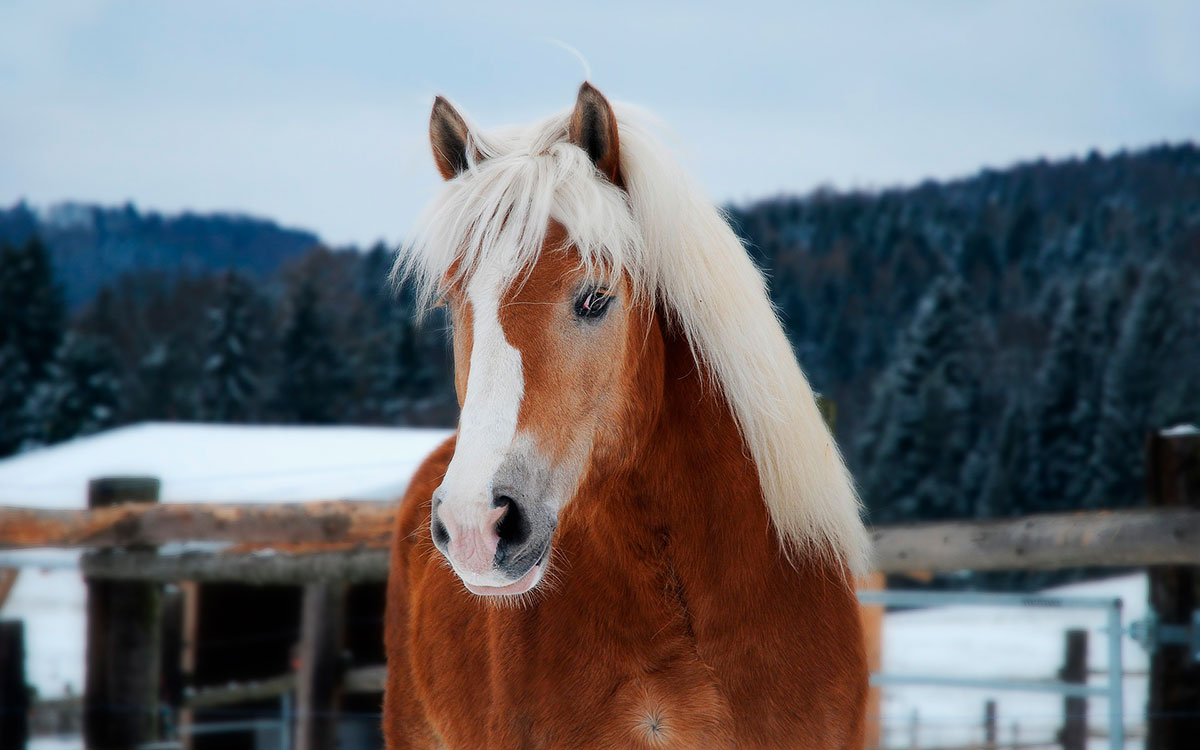
Would you like to be part of a group with an equestrian soul?
Join the Ampascachi Community. Obtain exclusive benefits for your holidays.
We tell you how to start, train and take care of your horse.
Interviews with direct providers of riding tours around the world.
Opinions of outstanding equine scientists and personalities in the equestrian sport world.
What happens when it’s too hot or too cold for your horse?
If temperatures exceed the thermoneutral zone within which the horse’s thermoregulation mechanism works, we will quickly detect changes in the horse and it is important to be vigilant. Let's have a look at both cases.
When a horse is exposed to temperatures below 0°C:
- The horse will seek shelter to avoid cold wind or rain, thus trying to increase its internal body heat increasing its energy demands.
- The temperature of the legs decreases because blood is shunted from the extremities to reduce surface heat loss.
- If it is very cold, the horse will start to shiver.
When a horse is exposed to temperatures above 25°C:
- The horse's heart rate increases to push more blood around the body.
- Blood vessels dilate to carry more blood to the skin.
- The horse increases its respiratory rate in an effort to release this build-up of heat.
- The horse may become easily dehydrated due to excessive sweating.
- The horse’s behavior is different, and they will look for shaded areas or water.
- Other disorders may include apathy, anorexia and difficulty moving.

Horses and Cold Temperatures
This is what we should do with our horses in winter.
Remember that horses handle cold temperatures better than humans. They are able to withstand colder temperatures thanks to their hardy nature.
Horses cannot just survive, but thrive in extreme cold climates.

Horse blanketing
The use of blankets on horses has generated controversy. While some people recommend it, others believe that the use of blankets can interfere with horses' natural thermoregulatory mechanisms.
The main reasons blankets are used on horses is to keep them warm, dry and clean.
Those horses that spend more time stabled are less prepared for cold temperatures than horses kept outdoors, so a blanket will help protect them from extreme cold. However, heavily covered horses will start to sweat, which makes them cold – the opposite of the desired effect with blanket use.
Through thermoregulation, the animal tries to warm up parts of the body left exposed to the cold, but in the process they become over-heated in those parts covered by the blanket.
Besides, horses also need to synthesize vitamina D when their skin is exposed to sunlight, and blankets may interfere with that.
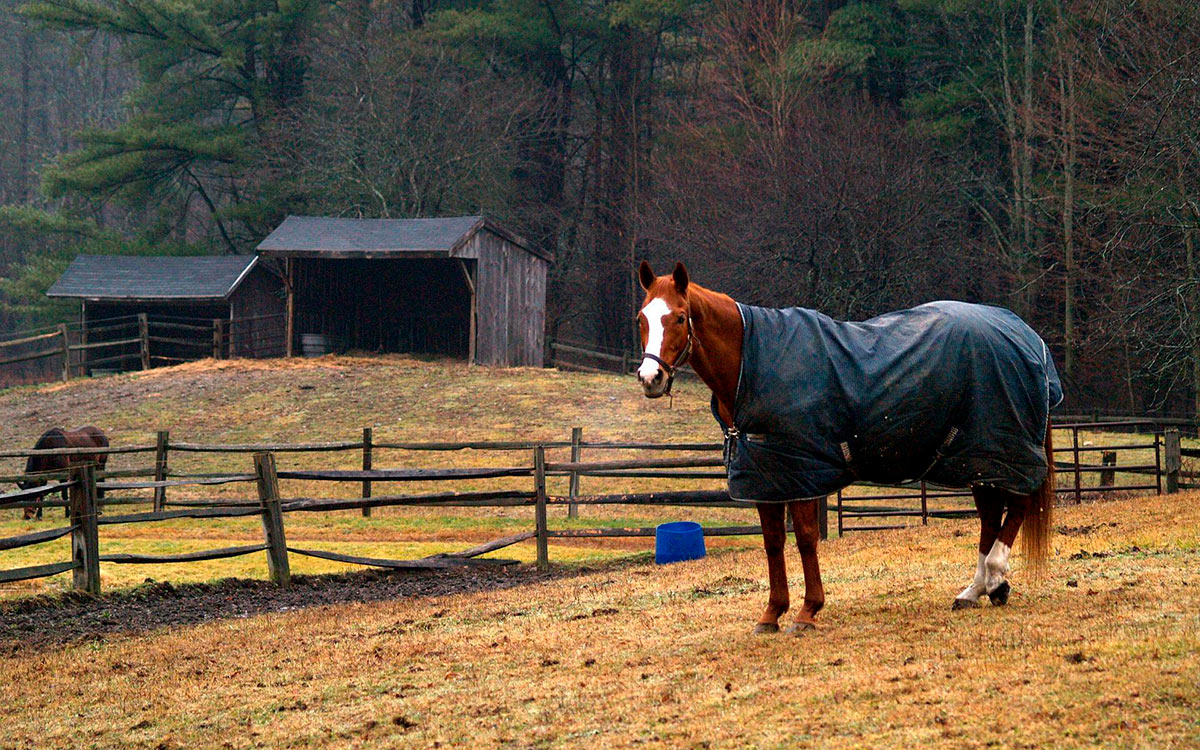
The importance of a good shelter
Studies have shown that horses can regulate their temperature, even in extremely cold weather, if provided with a good shelter.
One interesting consideration to bear in mind is that a stone shelter or stable will “draw” heat from horses by a process known as radiation, so that they may not even need blankets.
This shelter should provide a comfortable, clean and dry environment. If horses are kept in a field, they should also have access to shelter from wind, sleet and storms.
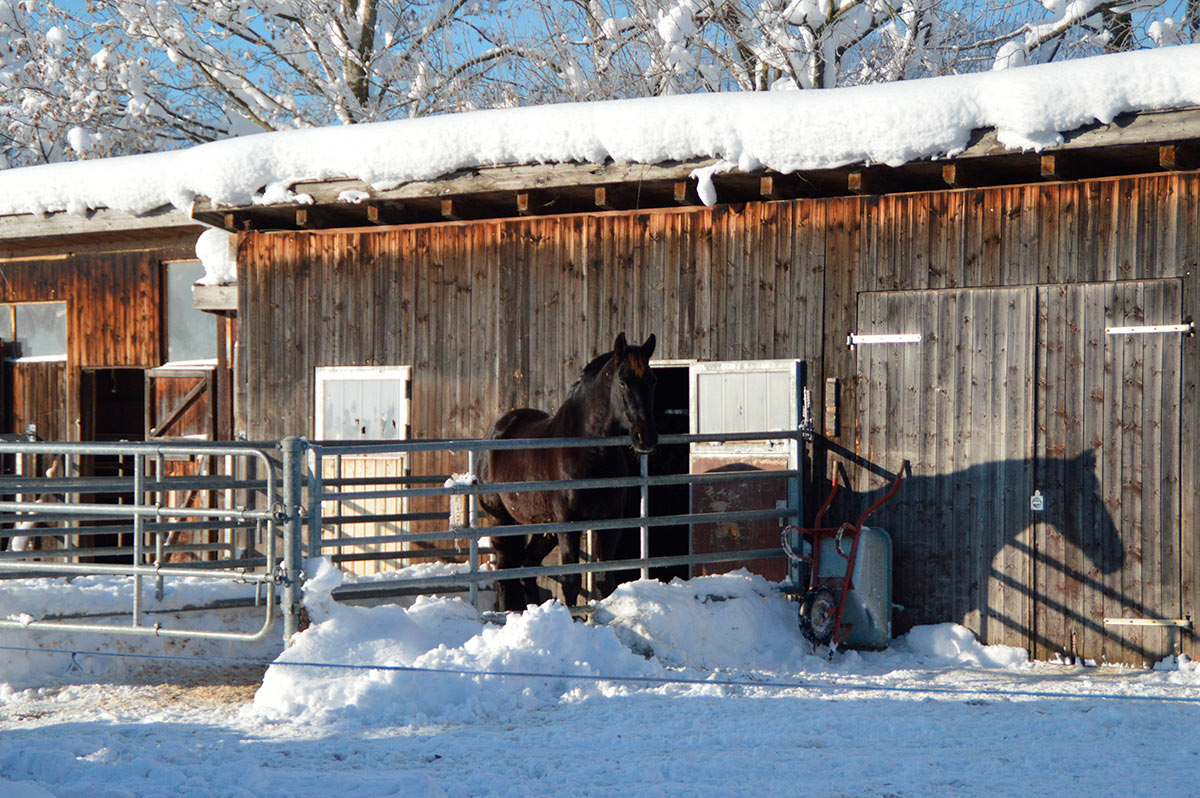
Diet
Heat production is greater on high-fiber diets than high-starch or high oil-based diets. Increased addition of energy to the diet is only really necessary when the average temperature drops below 0°C, especially with younger or older animals or those in poor condition.
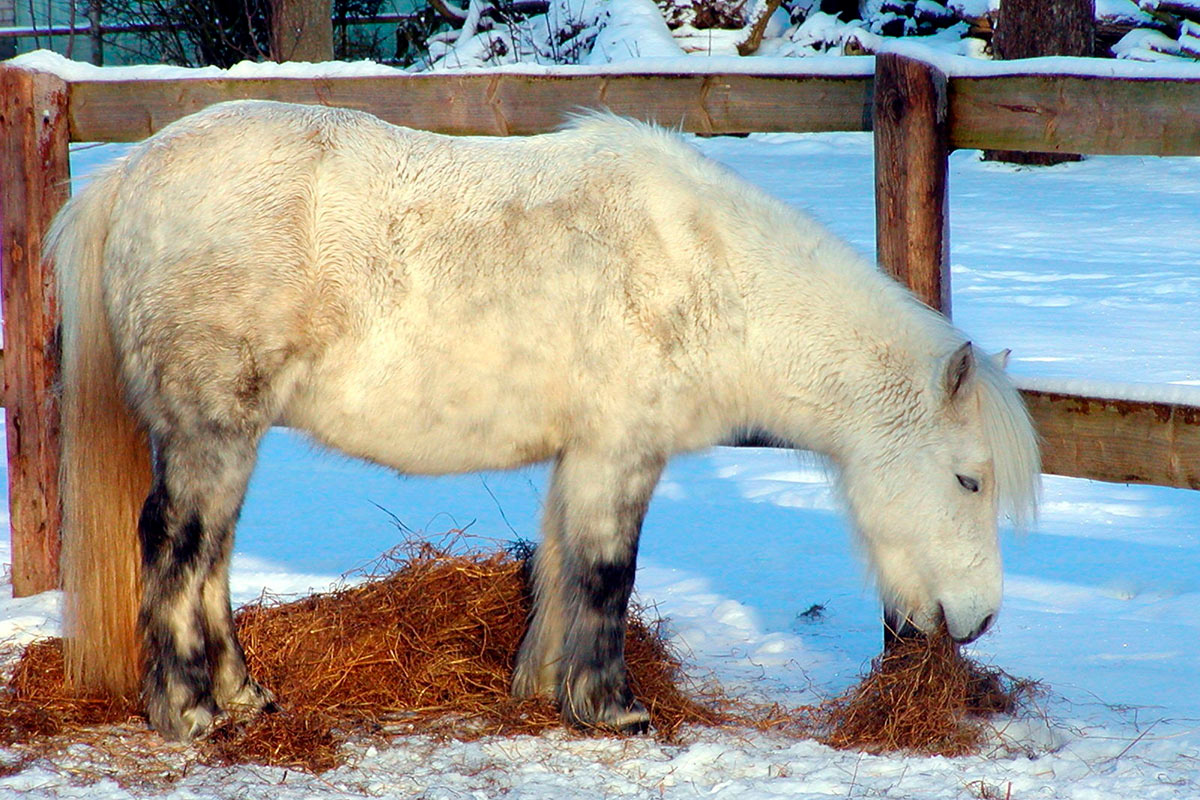
Winter Care Tips for your Horse
Finally, here are some tips for making life easier for your horse during the frigid winter months:
- Although horses evolved with a natural fur coat that protects them, if they are in a vulnerable situation, blanketing may be necessary in the harshest of winter conditions.
- We should consider increasing hay and concentrates as pasture quality or accessibility declines.
- Check your horse’s water bucket often. The water will freeze over in low temperatures, keeping your horse from getting anything to drink.
- Provide your horse with shelter from the elements that winter brings with it.
- Keep the horse’s barn in good condition.
- After a winter workout, it is essential to allow the horse's skin to dry.
- Watch the ground, if it is covered with ice it can cause the horse to fall.
- If you ride your horse in the snow, you can apply grease on his feet to prevent snowballs in the horses' hooves.
Subscribe to the Ampascachi Community and obtain benefits and exclusive content. Furthermore, we offer free advice on horses and equestrian tourism.
Horses and Hot Weather
In the case of hot weather, we need extra care and awareness to help our horse stay healthy in the heat.
While horses can tolerate much colder weather than humans, this is not the case when it comes to rising temperatures.
We should bear in mind that sweating in horses removes 25% of body heat and the risk of heat stroke and dehydration is higher.
A typical, idle horse in average temperatures, feeding on concentrates and fodder, should drink 5 - 6 liters per 100 kg of body weight. That is, a 500 kg horse requires between 25 and 50 liters of water per day.
With intense exercise and high temperatures, these amounts will increase.
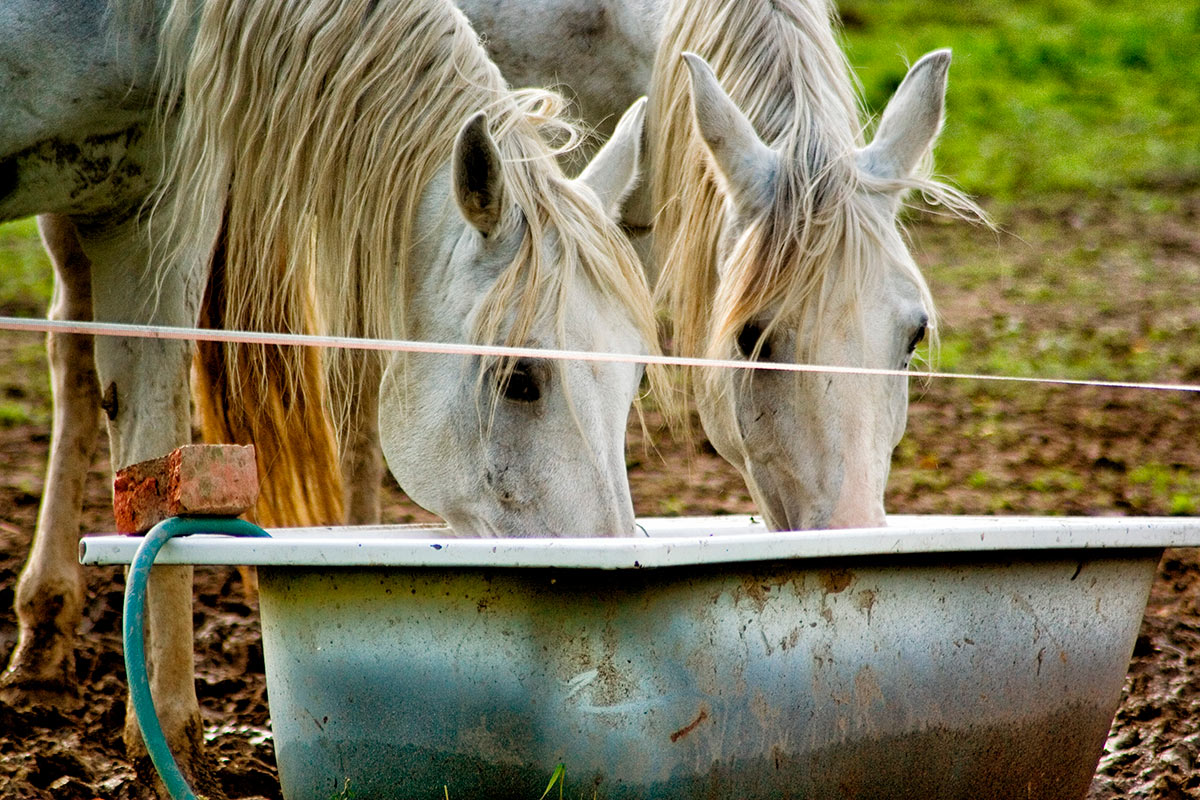
There are a number of ways to evaluate whether your horse is dehydrated:
- Pinch the skin near the point of the shoulder and see if the skin snaps back quickly.
- Check that the mucous membranes are pale pink and moist.
- A horse that produces dark urine may be dehydrated.
- Check how your horse is breathing. The normal respiration rate is 20 breaths per minute.
Summer Care Tips for your Horse
If you suspect that your horse is suffering from heatstroke, you must act quickly.
Here are some tips:
- Place your horse in in the shade: under a tree or in a barn, for example.
- Spray or sponge the horse with cold water. It is the most effective method to reduce body temperature and it will not cause muscle cramping. The more cold water we use, the better.
- Apply ice on the horse's head and throat, where the blood vessels that supply the brain are.
- Any other cooling method you can think of is good, such as placing a fan close to the horse.
- To keep him hydrated, offer your horse water, even if it is warm. The important thing is that he drinks, but do not force him, he has to drink naturally.
- If you have electrolyte powder, you can add a tablespoon in the water bucket, but never give him any medication as it may affect his kidneys.

Spray your horse with cold water
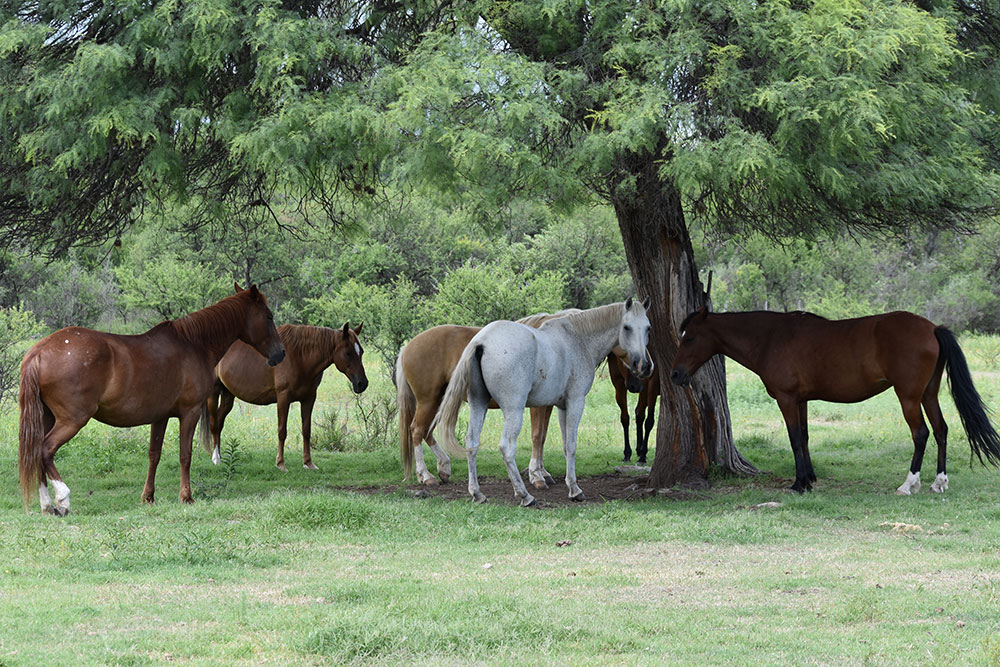
Place your horse in the shade
Conclusions
As warm-blooded animals, horses are very adaptable and typically can handle significant temperature swings. They have a very complex and sophisticated thermoregulation mechanism.
A horse's body temperature depends on the balance between heat input and heat output.
However, for our animal to be happy and healthy, it’s up to us as responsible horse owners to take the necessary precautions to prevent both heat stress and exposure to extreme cold weather.
We hope that this practical information will be useful to keep your horse in great condition.
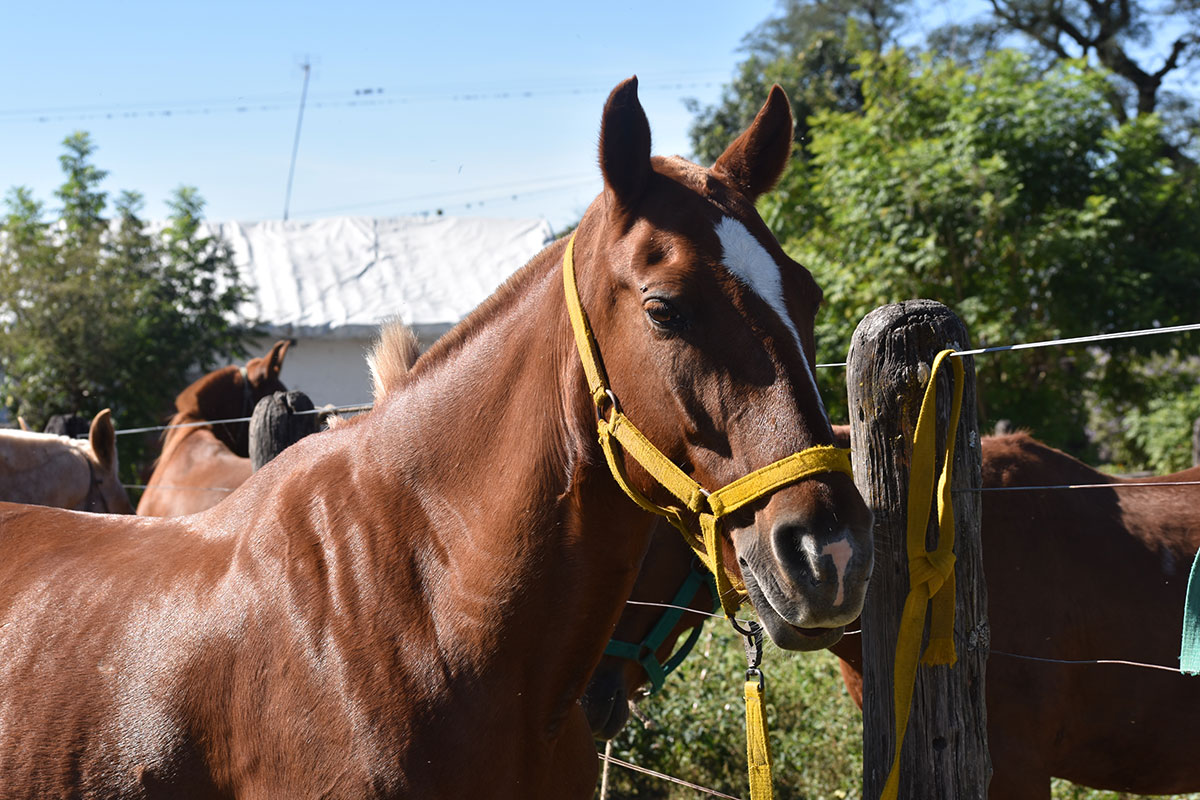
Would you like to delve deeper into the world of horse training?
Download our free guide on Horse training step by step. There we tell you everything we have learned about horse training in more than 25 years of experience.
And if you want to be a professional horse trainer and get field-based training, you should check out our training program. You will have the opportunity to live in our equestrian centre and experience our full training process with young horses.
~
THIS COULD ALSO BE INTERESTING

How to understand the welfare of horses
Discover the evolution and implementation of the 5 domains model for animal welfare applied to equids. Assess the well-being of your horse based on his physical and mental health.

Horse training: Interview with Andrew McLean
Dr Andrew McLean is one of the persons that have had mayor influence in the world of equitation with his books and investigations on the learning behaviour of horses.
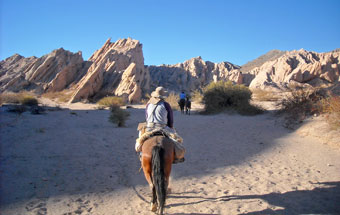
Visiting Northern Argentina on Horseback
Travelling around the north of Argentina on horseback offers you some wonderful options. Riding a horse, you will go through the awesome landscapes of the Calchaqui Valleys.
~
WHAT IS YOUR OPINION? LEAVE A COMMENT
Planning your horse riding holidays?
Join the Ampascachi Community. You will get exclusive advantages and guidance for your next horse riding holiday.


 German
German French
French Spanish
Spanish